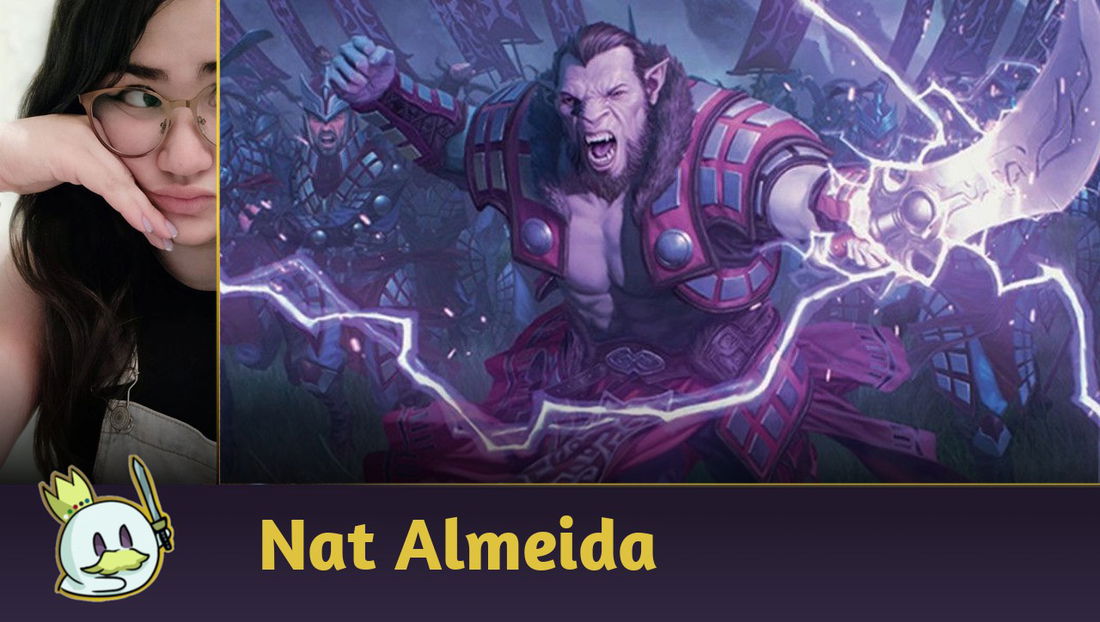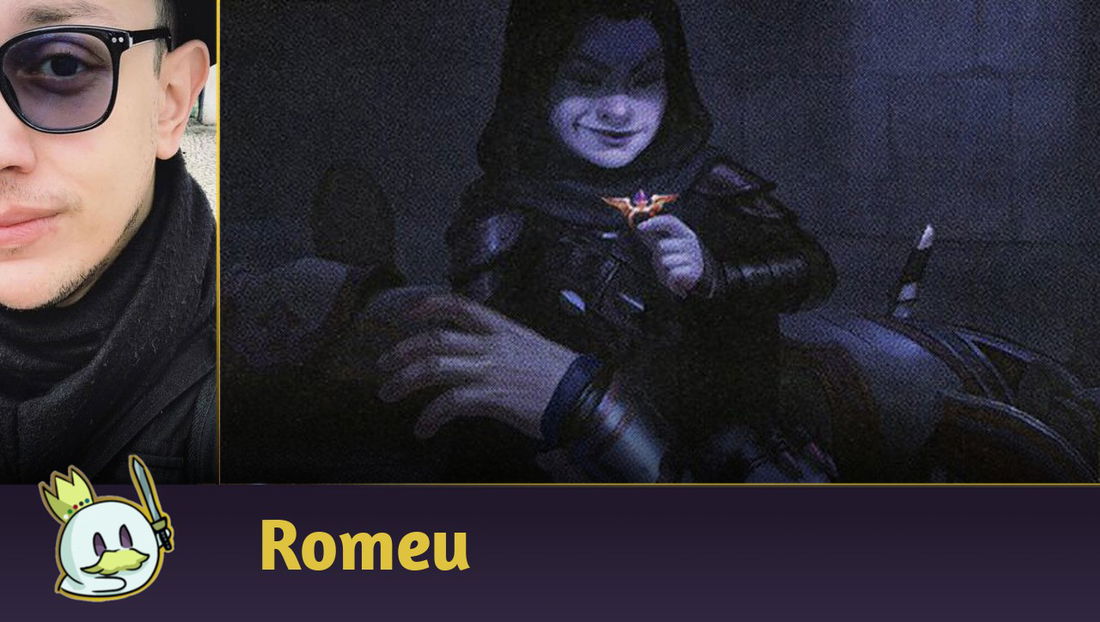One of my all-time favorite Magic cards is Snapcaster Mage. It was one of the first expensive cards I bought with my first paycheck, and I used it everywhere I could: from Standard tournaments where I played UWR Control (Jeskai only came into existence as a name in 2014) to the casual “Legacy” decks I used at geek events in my late teens and early adulthood, where it had Stoneforge Mystic, Lingering Souls and Swords to Plowshares as its best friends.
Snapcaster has been with me for years: when I migrated to Modern, my deck of choice was Splinter Twin. Two years after its ban, I met the mage again in what became my favorite archetype of all time: Grixis Shadow, where it was combined with Kolaghan’s Command to establish the archetype’s value engine.
Ad
However, the years were not kind: Modern Horizons brought power creep bombs to the format and, little by little, Snapcaster Mage gradually became less relevant over the years, and despite some appearances with Flame of Anor in Izzet Control lists, its glory days in Modern are over, and it is now a relic of the past for Legacy, while also being too strong for Standard and Pioneer.
Or maybe it’s just not that strong?
Songcrafter Mage - Review

(Bonus for the least original name possible for a card in Tarkir: Dragonstorm)
Songcrafter Mage, as the name suggests, is a new take of Snapcaster Mage for Standard and Pioneer, where the cost restrictions are higher, but with some benefits caused by the Harmonize ability.
In case you don't know how it works, Harmonize is an alternative cost that allows you to play a card from the graveyard, not unlike Flashback, but with an extra line of text that allows tapping a creature to reduce the colorless cost of the spell by X, this being the same power as the tapped creature.
The consequence, in this case, involves increasing the color restriction - it seems intentional that the new card is not in a color combo that includes cards like Thoughtseize - in exchange for a bit more flexibility in casting higher mana value cards, making it, in part, a sort of Snapcaster Mage that comes with a Dark Ritual for colorless mana.
In practice, this means that Songcrafter Mage works better with bigger spells, like Collected Company or Witchstalker Frenzy, than with cheap effects, where it would technically cost more than its predecessor, like with Lightning Bolt.
Furthermore, as a three-color card, it also poses challenges in terms of being cast in formats that have more difficulty accessing perfect mana, as will be the case with Standard post-rotation, and in Pioneer, playing with three colors has a high cost in terms of speed when compared to two-color archetypes.
Songcrafter Mage in Standard
One point that is evident with each powerful three-color card revealed in Tarkir: Dragonstorm is that Standard may undergo a competitive overhaul with the expansion based on the rise of clan color archetypes in the competitive Metagame, and Songcrafter Mage may be the card that motivates the creation of Temur decks.

Two of the favorite targets for Songcrafter Mage in the current Metagame might be Stock Up and This Town Ain’t Big Enough, both two of the most powerful cards in the current Standard.
Its interaction with This Town Ain’t Big Enough would allow, for example, to pay only 
Ad
Stock Up would turn Songcrafter Mage into a value piece. Harmonize says that its controller can tap a creature to pay the colorless cost, so if there is another creature with two power, it is possible to tap it instead of the mage (which, by the way, is a bard) to cast Stock Up for 

Season of Weaving is another spell that has good interactions with Songcrafter Mage, whether to “reset” the board and draw cards while keeping the mage for another spell, or even to draw several cards while creating another copy of it in longer games, or of another creature.

We also cannot disregard the fact that the new creature is good only for being a three-mana Snapcaster Mage: paying four mana to play a 3/2 and block a creature on the board while dealing two damage to another with Torch the Tower is a viable choice, as is the possibility of using it at the end of the opponent's turn for a Witchstalker Frenzy for 

Another ikey interaction is with spells with 


And of course, you can always just use it to repurpose cheap and powerful cards like Monstrous Rage into another creature.
Songcrafter Mage in Pioneer
The fun for Songcrafter Mage in Pioneer starts with a widely known staple.

The new card makes one of the most powerful instants in the format cost only 
But there's a problem with this equation: it's in a color combination that's not very well-known today for mixing several powerful creatures with Collected Company in Pioneer, and Songcrafter cares too much about instants and sorceries to want to be just "Company 5-8" without any other support.

Of course, there's no shortage of good targets for Company in Pioneer in these combinations, and cards like Screaming Nemesis would be a good way to expand Songcrafter Mage's utility by including cards like Witchstalker Frenzy or other damage-based removals that can be reused even for a "combo" with Nemesis.
In addition, other interactions could include the now little-played Bonecrusher Giant, which is a one-hit for Company while operating as early game removal. Ideally, a deck with this theme would have around eight or, at most, ten non-creature spells (Collected Company included) to avoid a very high whiff rate of its key card.
Ad

Versions of Temur Prowess would be another viable home for the new card, but it is a value permanent and not necessarily a good clock boost, being better alongside Young Pyromancer and similar spells that make better use of its ability, such as the aforementioned Stock Up, than with Slickshot Show-Off and pumps to end the game quickly.

Just like in Standard, Songcrafter Mage interacts well with spells with X value, or whose colorless cost can be easily paid for by it, and some archetypes like Temur Analyst support both the right number of spells to include it and the mana needed to get the most out of it.

It’s worth noting the other side: although the idea of playing Songcrafter Mage in a Goodstuff stack like Niv-to-Light seems tempting, the new card has a terrible interaction with Bring to Light or any card that cares about the colored mana you paid.
Wrapping Up
Songcrafter Mage is not Snapcaster Mage and should not be treated as such. The color restriction will make a big difference when it comes to making archetypes viable for the card, making it possible mainly for Temur lists that, for the most part, can focus on being Midrange or Ramp-oriented, or on Goodstuff piles.
The interaction with Collected Company is one of its greatest contributions to Pioneer, and it will be necessary to evaluate the range of cards in the format that make this a powerful new take in the format, but with challenges around using a card that cares about spells in an archetype that, naturally, will care about creatures.
Thanks for reading!








— Kommentare0
Sei der erste der kommentiert